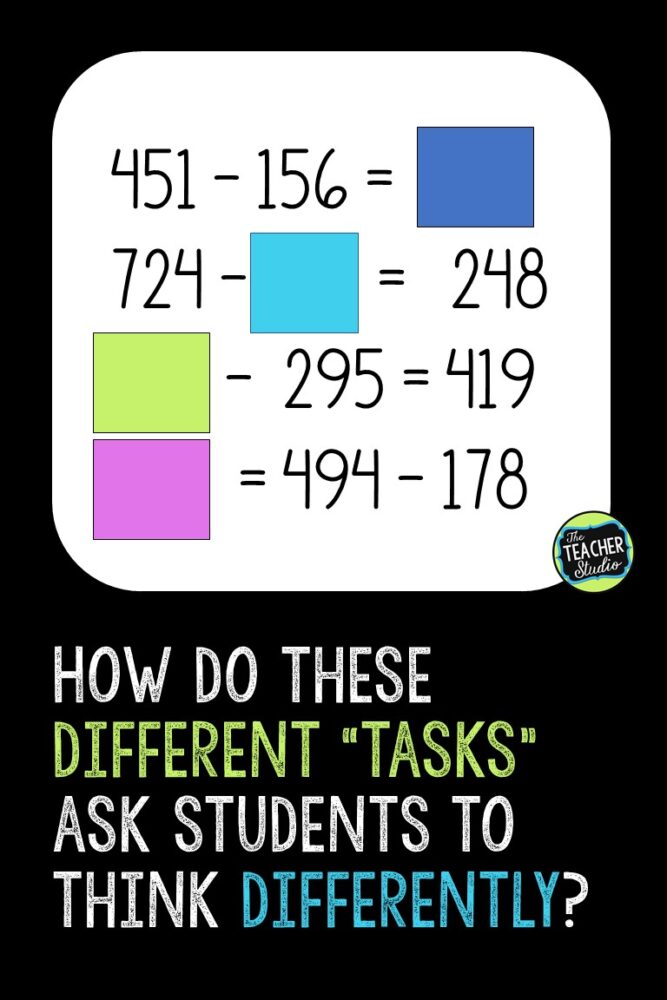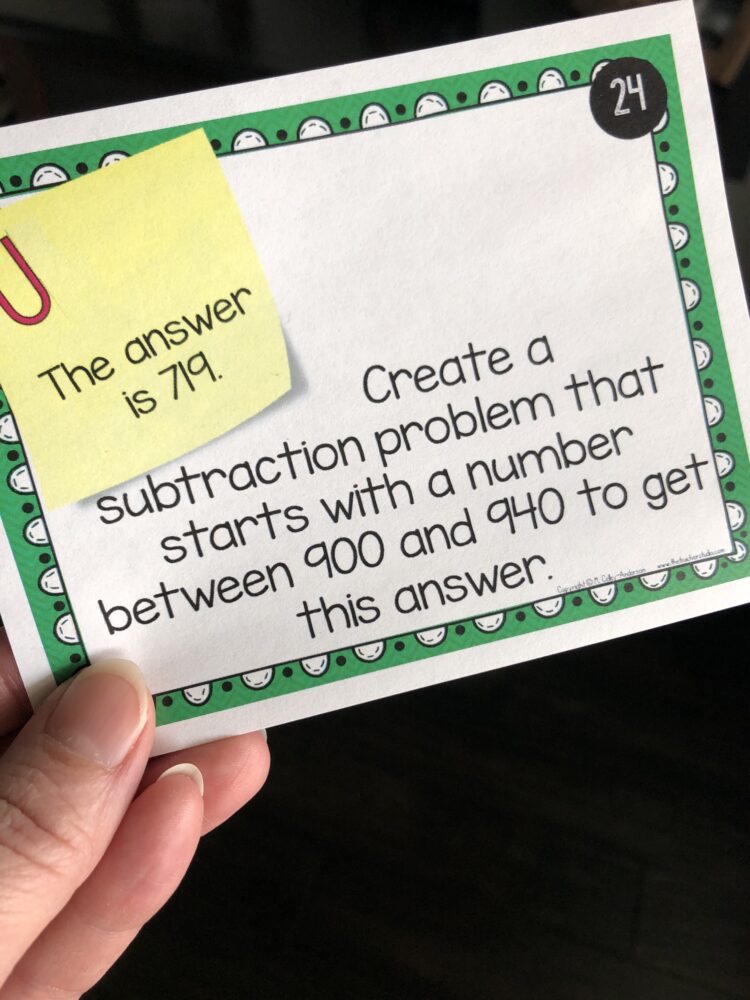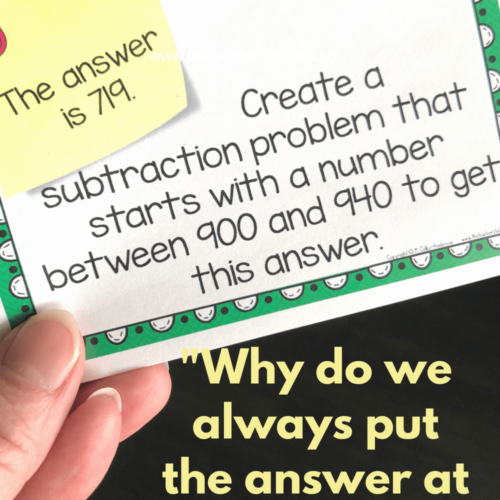
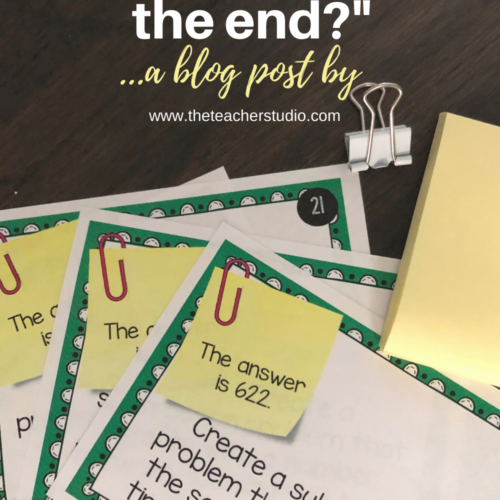
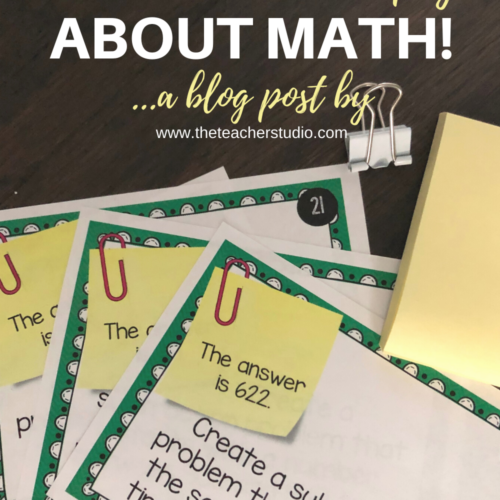
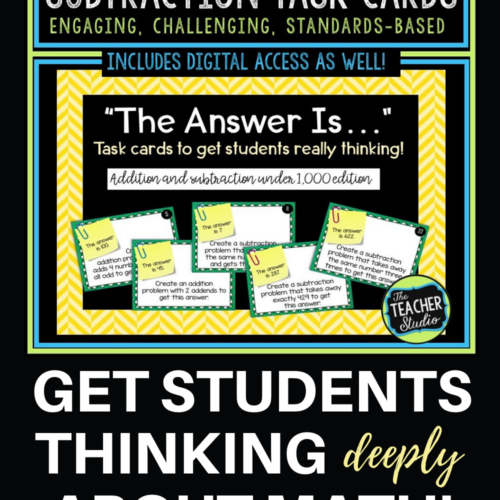
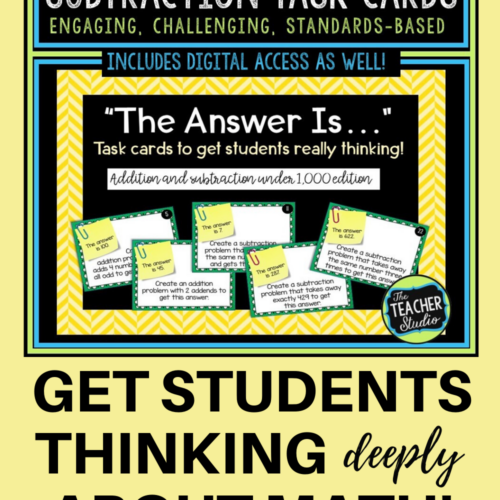
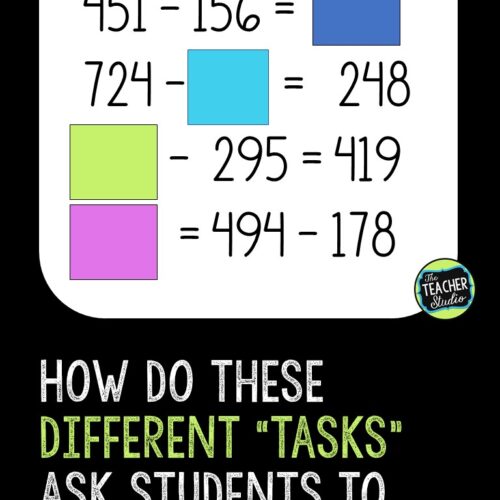
Teaching Computation
Addition and subtraction with regrouping are two critical math skills that all elementary students must learn. One thing that we often forget is that students need to experience math instruction—even computation in different ways. So often we ask them to “fill in the blank” instead of really thinking and tapping into that number sense we know they need. Most math series do exactly this…lots of practice that all look similar. They have students add or subtract two numbers. Students write their answers in the box. End of story.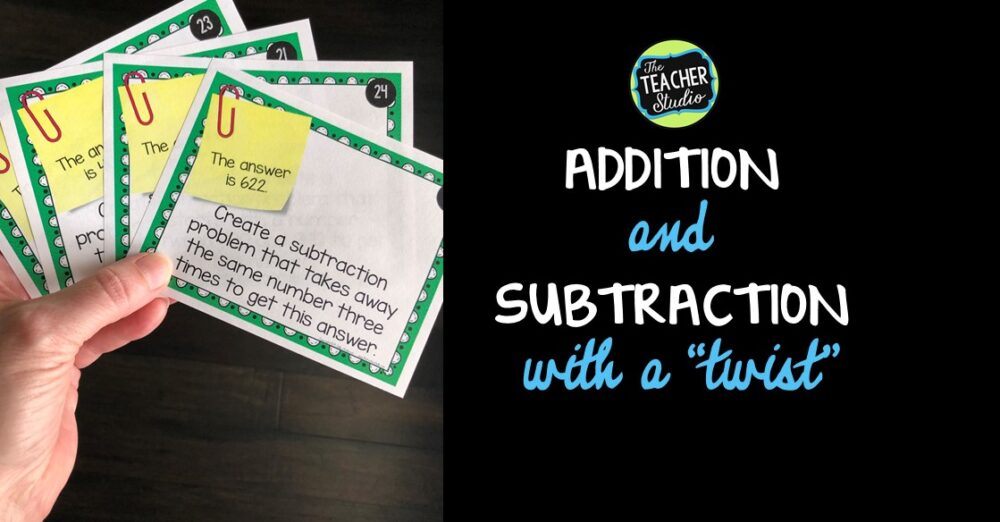
What Else Can I Do?
Well, I have a few ideas for you!
- Vary the variable! You don’t always need a “box”. Use a line. A letter. A shape. Explicitly teach students what this “missing part” means (and yes, I use the word “variable”!)
2. Vary where that variable goes! So often, we put the “answer” at the end. Mix it up! Check out the different levels of thinking required in the following. As you can imagine, the first equation is the most commonly seen–and also the most basic. All of the others require students to truly understand how addition and subtraction are related. Students need to be flexible with their thinking. (By the way, if you are unfamiliar with the basics of this, check out THIS POST about CGI math!)
3. Consistently present problems in different formats where STUDENTS need to determine what is missing. This is true for number sentences as shown in the image above–but also with word problems. (Check out some of the word problems in my store that do this. You can CLICK HERE to see some very basic ones and HERE for some that are a little more advanced.)
4. Ask students to write their own problems–especially where you give THEM an answer, and they need to create the problem. One of my favorites has always been to have students write their own problems no matter what our topic, and that’s what led me to create this resource. If you want to see more, read on!
Computation Task Cards With a Twist!
This set of task cards asks students to work with addition and subtraction under 1,000—but THEY need to come up with the problem! Each card gives them an answer…and a “rule” they need to follow. The possibilities are endless in some cases and limited in others, but because these are open-ended, there is no answer key, I’m afraid! Students can check their work on a calculator, have a buddy check it, or you can get creative!
I love to share different examples of student work under the document camera or in small groups. Think about all the skills needed to solve this, rather than merely filling in a blank. They need to “make sense” of the problem and know what it’s asking. Students can use estimation to make sure they are picking numbers that make sense. They may use strategies like “guess and check”, or they may know the relationship between adding and subtracting and can use them to help them. This is MUCH more number sensed based–and much more meaningful mathematically.
Flexibility Is Key!
In the days where differentiation is needed, I love that I can use these in math workshop in different ways. Students can work collaboratively. Students can work alone but use different tools such as manipulatives or calculators. The sky is the limit, and when I look at the level of each student’s work, I can really see the depth of understanding.
Interested in giving this a try? Here’s what this resource offers.
►24 task cards. The first 12 are at an easier level (in this set, numbers under 100) while the second 12 are more challenging (numbers under 1,000). You will notice the paper clip color changes from green to pink when the level changes.
►Task cards in both full color AND gray tones for black and white printing.
►Suggestions for use.
►CCSS alignment page
►Paper recording sheet if used in math stations or centers
►Digital version for even more flexibility in the class and for home access.
Suggestions for use
✔ Perfect to use as a full class warm up. Project a card on the screen or give each student a copy to glue into their notebooks. Have them work independently, then “buddy up”, then share out full class! Consider making a chart of the different solutions they find.
✔ Use as a challenge activity for fast finishers (in lower grades) or review activity for upper grades!
✔ Try using as a station in math workshop AFTER students are fluent with addition and subtraction strategies.
✔ You can even use these as a replacement for some of the paper and pencil pages that are traditionally associated with computation.
✔ Send digitally as a short and fun homework task!
Anyway, I hope this gets you thinking about how we teach addition and subtraction and motivates you to try something new! Thanks for stopping by.


